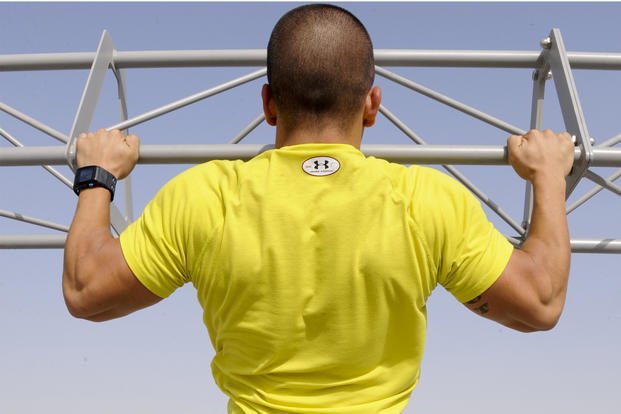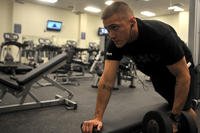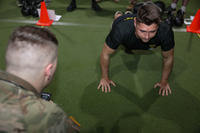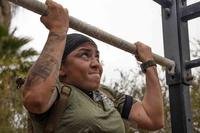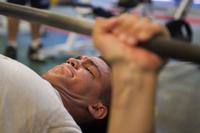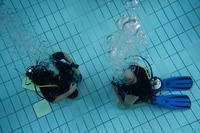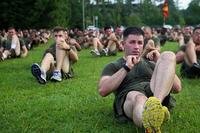It doesn't matter what you are trying to get good at doing; there is a chance that pain and injury will start to manifest. Some are minor aches and stiffness that go away with a warmup period. Some are more acute pains that require a full RICE regimen (rest, ice, compression, elevation, plus a foam roller).
Some will require a trip to a doctor or physical therapist. Some pains are performance lulls that can be mentally challenging for an athlete, and it can affect your tactical profession as well.
These things happen at any level of fitness, but high levels of fitness come at a cost, especially for the tactical athlete. If you are blessed to be a professional athlete and allowed to take naps after hard workouts and it is your full time job, the physical price to pay is minimal. Tactical athletes do not have that luxury, so why push yourself like a professional athlete? What is optimal for the tactical athlete?
The type of people in tactical professions are typically competitive by nature and will push themselves to extremes just for fun. I am not saying that is wrong. I love to do it -- with boundaries. As tactical professionals, you have to ask whether the hobby of advanced extracurricular fitness is helping or hurting. We all have skills and athletic histories that make certain elements of fitness easier, but when continuous mastery of those easy elements start to hurt and make weaknesses more pronounced, you have to look at your programming and seek balance.
Recent articles have discussed redefining what's optimal for the military, police and firefighter athlete, aka tactical athlete, and I started with this discussion after seeing many tactical athletes doing professional athletic workouts. Why? The reasons to redefine optimal are twofold:
Your Whole Body Must Be in Shape
You do not need to be a marathoner to be an Army Ranger, but you need to be good at running and rucking. You do not need to be a competitive swimmer to be a Navy SEAL, but you need to be good at swimming and confident in the water. You do not need to bench-press or squat a truck to be a tactical athlete, but you need to be strong enough to move yourself, others and heavy equipment when needed.
It is fine to have these types of skills, but finding your weaknesses in the other elements of fitness needs to be the goal. Specializing too much will neglect many important elements. Tactical athletes need to be good at all of the following:
Strength and power: Overall strength to jump when needed and lift equipment and people.
Endurance: Run, ruck, swim, other.
Muscle stamina: Body-weight movements and lifting of equipment and people for time and distance.
Speed and agility: Run on any terrain, quickly finding cover when needed.
Flexibility and mobility: Full range of motion of joints and general muscle limberness.
Hand-eye coordination: Highly important and aids with tactical skills, such as shooting, throwing, etc.
Remember the difference between good and great: Great is for competitive professional athletes, and good is just a notch below, but that also may be your physical optimal anyway.
Don't Overuse and Potentially Injure One Group of Muscles
When pushing the envelope on physical events, it usually comes with a price. Being great at one thing may not allow you to be good at others.
Pushing yourself -- whether it be in marathons, ultramarathons, weightlifting meets, triathlons or other events like obstacle course racing or bodybuilding -- are things tactical athletes like to do as hobbies. Pushing the body's limits means you have a greater chance of injury, whether it is 50+ miles per week of running, Ironman triathlons, powerlifting meets or bodybuilding shows. All of these, and there are others, increase your chances of an overuse injury at best and traumatic injury at worst, which can take you off duty for long periods of time.
Now I am not saying that you shouldn't run marathons or compete in tough events, like triathlons, powerlifting meets, etc. But do not maintain the same focus on one thing year-round. Take cycles of the year and focus on each of the elements of fitness. Our groups periodize the year with the following method:
Note: This is one method, not the only method of periodization, and can be arranged in four x 12- and 13-week cycles as you prefer, or as your op-tempo dictates.
Winter: Peak at strength and power, but minimal impact endurance and more non-impact endurance. Focus on joint health and mobility. Do some rucking to maintain that ability. Perform minimal calisthenics.
Spring transition: Progress in running and rucking for endurance, focus on combination of strength and power, and integrate muscle stamina via calisthenics sets into the workout. Speed and agility days are mixed between longer cardio days each week. Focus on swim and non-impact cardio progression and interval training. Get or stay flexible.
Summer: Peak your endurance and muscle stamina, and high-rep calisthenics. Minimal weight training but maintain a big focus on joint health and mobility.
Fall transition: Progress with weighted lifts to reduce calisthenics and running. More interval training on non-impact methods (bike, elliptical, rower, swimming). Get or stay flexible.
Work out hard. Focus on what you love to do as that tends to be what gets us motivated to train anyway, but take time to make training weaknesses more of a strength. You will find that after a cycle or two, you will have more balance performance-wise and be healthier for it.
Stew Smith is a former Navy SEAL and fitness author certified as a Strength and Conditioning Specialist (CSCS) with the National Strength and Conditioning Association. Visit his Fitness eBook store if you're looking to start a workout program to create a healthy lifestyle. Send your fitness questions to stew@stewsmith.com.
Want to Learn More About Military Life?
Whether you're thinking of joining the military, looking for fitness and basic training tips, or keeping up with military life and benefits, Military.com has you covered. Subscribe to Military.com to have military news, updates and resources delivered directly to your inbox.
